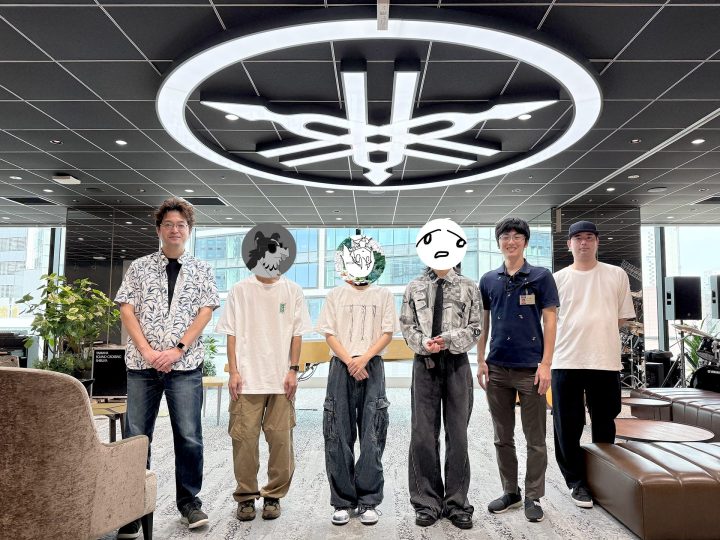2025.11.19
VOCALOID Collection: Yamaha Sound Crossing Shibuya Award winners Tokyo Manaka, Inoutsuha SA and Kanade Experience Recording, Mixing and Mastering
When the VOCALOID Collection 2025 Summer (“Vocacolle”) was held as a festival of VOCALOID culture, the “YAMAHA Sound Crossing Shibuya Award” was set as one commendation. On October 5th, 2025, three award-winning VOCALOID producers gathered at YAMAHA Sound Crossing Shibuya, which is in the SAKURA SIDE of Shibuya Sakura Stage. As an additional reward for the YAMAHA Sound Crossing Shibuya Award, we prepared a hands-on experience with the opportunity to have mixing done by a professional recording engineer as well as a chance to experience facilities of YAMAHA Sound Crossing Shibuya that are normally not open to the public.
YAMAHA Sound Crossing Shibuya is made up of the LAB, which includes a cafe, and the LOUNGE (not public), which is used for artist endorsements. The presentation of the YAMAHA Sound Crossing Shibuya Award was conducted in the LOUNGE. Mr. Takemoto and Mr. Yoshida from Yamaha Corporation were our hosts that day.
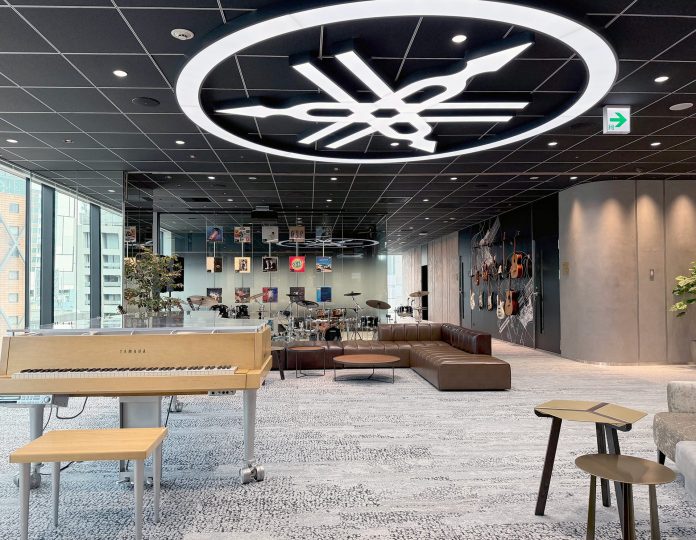
YAMAHA Sound Crossing Shibuya LOUNGE tour
Starting in a meeting room, the YAMAHA Sound Crossing Shibuya Award was explained, and the participants, who were meeting for the first time, introduced themselves to each other.

Winners of the YAMAHA Sound Crossing Shibuya Award
Tokyo Manaka

Inoutsuha SA

Kanade

Next was a tour of the Sound Crossing SHIBUYA LOUNGE. After hearing an explanation of historical instruments displayed in the lobby, they toured rooms soundproofed for various instruments, including drums, synthesizers and pianos. During this tour, there was a moment when everyone was moved by the self-playing Opera Piano once owned by the late Sakamoto Ryuichi. This performance was recorded by Sakamoto Ryuichi in his own home.

They also visited soundproof rooms prepared for various instruments. In the drum room, Inoutsuha SA had a go at playing real drums. Everyone seemed to discover something new in the sounds of real drums, which are different from plug-ins.

Mixing and mastering consultation sessions
Following the LOUNGE tour were the eagerly-awaited hands-on mixing and mastering sessions.
First, advice was given while examining the multi-track data of a song by Tokyo Manaka. Mr. Nakamura who is an professional sound creator suggested that the vocals and instruments seemed disconnected and that improving the relationships between the instruments would make the song more danceable. Then, Tokyo Manaka asked about the management of finished sound source levels. Nakamura responded with advice based on his actual work. The advice that even better finished productions could be achieved by improving the level management of the original data was received with great interest.
Tokyo Manaka actively asked questions until the end of the scheduled time. While listening in the YAMAHA Sound Crossing SHIBUYA environment to tracks they know well and reference tracks, they seemed to resolve some usual concerns.
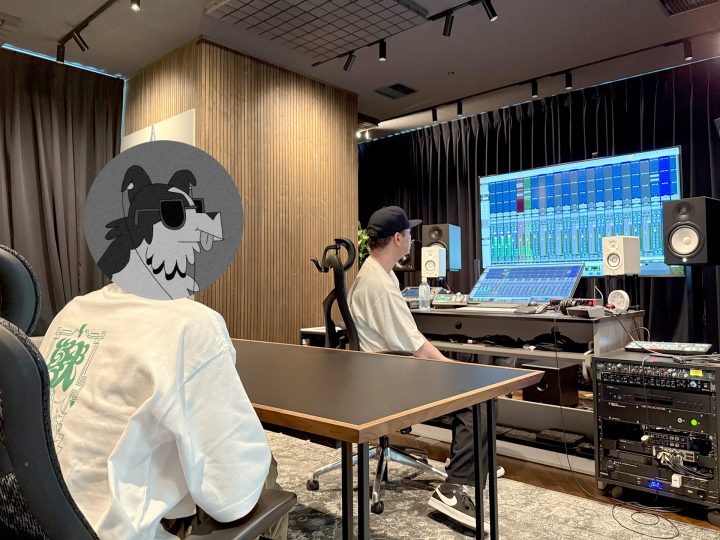
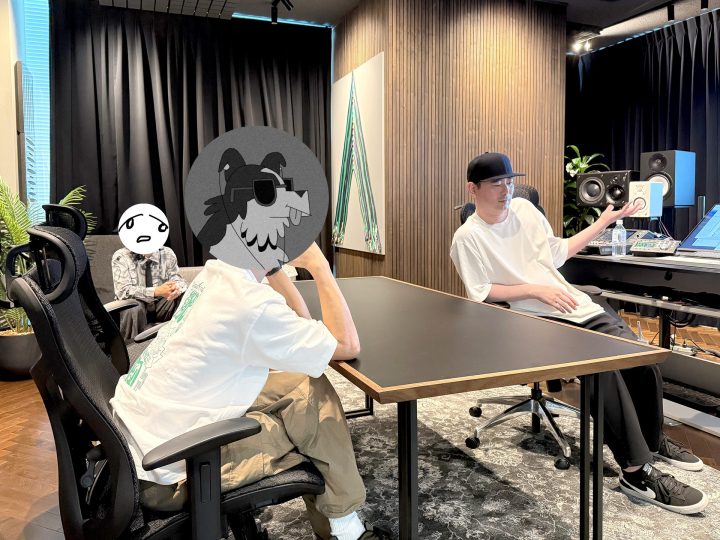

Comment from Tokyo Manaka
By having a pro listen, I learned about things that I don't normally notice during usual production. This was an opportunity to re-examine myself objectively. Until now, I adjusted the loudness of vocals with the vocal track volume. I was surprised, however, that he adjusted the overall volume balance to make it sound louder. This experience was valuable for my own production, of course. As I strive to reach the top of the music business in the future, though, I also feel it is important to team up with professionals when producing songs as necessary for mixing and mastering when producing songs.
After a midday break, the session for Inoutsuha SA started in the afternoon. They did listening comparisons of data from Inoutsuha SA with versions in which Nakamura had made slight adjustments to the sound sources. As with Tokyo Manaka, they explained techniques for adjusting the relationship between the kick and the vocal to create a sound that makes people want to dance.
During question time, Inoutsuha SA asked questions about the use of compressors. They listened intently to explanations about what kinds of things happen when compressors are used, the use of compressors for the purpose of changing sounds and other professional techniques. In particular, I think the point that the groove can be changed by adjusting compressor parameters is valuable knowledge for making dance music.
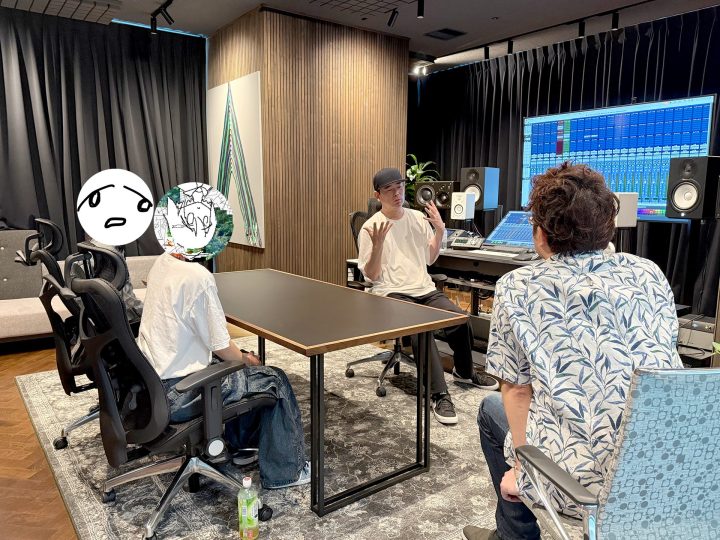
In addition, since Inoutsuha SA can play the piano, we used facilities in the LOUNGE for a hands-on piano recording session. The sound from playing the YAMAH S6 piano was transmitted to the control room over a Dante network. The participants were all captivated by the real sound.


Comment from Inoutsuha SA
In addition to the hands-on mixing and mastering, being able to touch real instruments was also a really major experience. In particular, with the piano, the weightiness of the keyboard touch and the sound reverberations, for example, were totally different from the sound we hear with plug-ins. High notes are easily produced with plug-ins, and I was surprised that they require strong playing to make them sound on a real piano. Regarding mixing, I previously had the misconception that I should not alter vocal levels, so I was surprised to be taught that using automation to adjust vocal levels is good. I also experienced first-hand that selecting and setting compressors and doing various things as you like is good. I really felt that music should be as you like.
Finally, advice was given about Kanade’s track.
Kanade asked several concrete questions about mixing. In particular, they asked about methods to separate numerous vocals when mixing and received explanations of techniques to resolve this issue using equalizers. In addition, there was a question about loudness management in mastering that Nakamura answered as an engineer based on actual work experience.
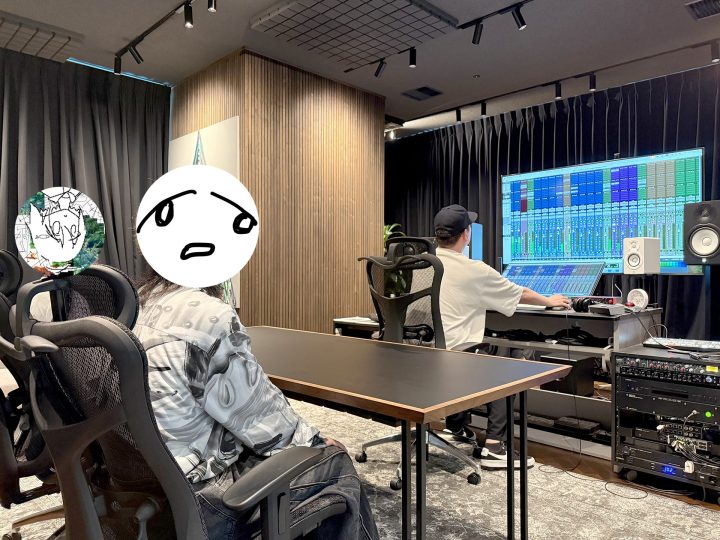

Comment from Kanade
Since I like distorted sounds, sounds are distorted in parts of my music. This is not conventionally considered good, so I was concerned when I came to participate. But, I was told that this could be enhanced and taught techniques to make it sound even better, so I am really happy. Touching real instruments and making sounds was also a great experience. I can play the drums, but I had never heard piano or acoustic guitar in a good environment before. In particular, recording the piano and hearing its sound as is was a golden opportunity. I was surprised that it was totally different from plug-in sounds. I think this will be a reference for me in the future and I want to try to get closer to the sounds I heard today.
Seeing the surprised expressions throughout the day of the three VOCALOID producers that participated left an impression. The opportunity to touch and make sounds with drums, pianos and other real instruments seems to have been great fuel for music creation. Moreover, being able to communicate with three producers who actually use VOCALOID was also a valuable experience for Yamaha staff. We will continue to develop products and conduct marketing efforts to boost VOCALOID culture, so expect more from us in the future!
